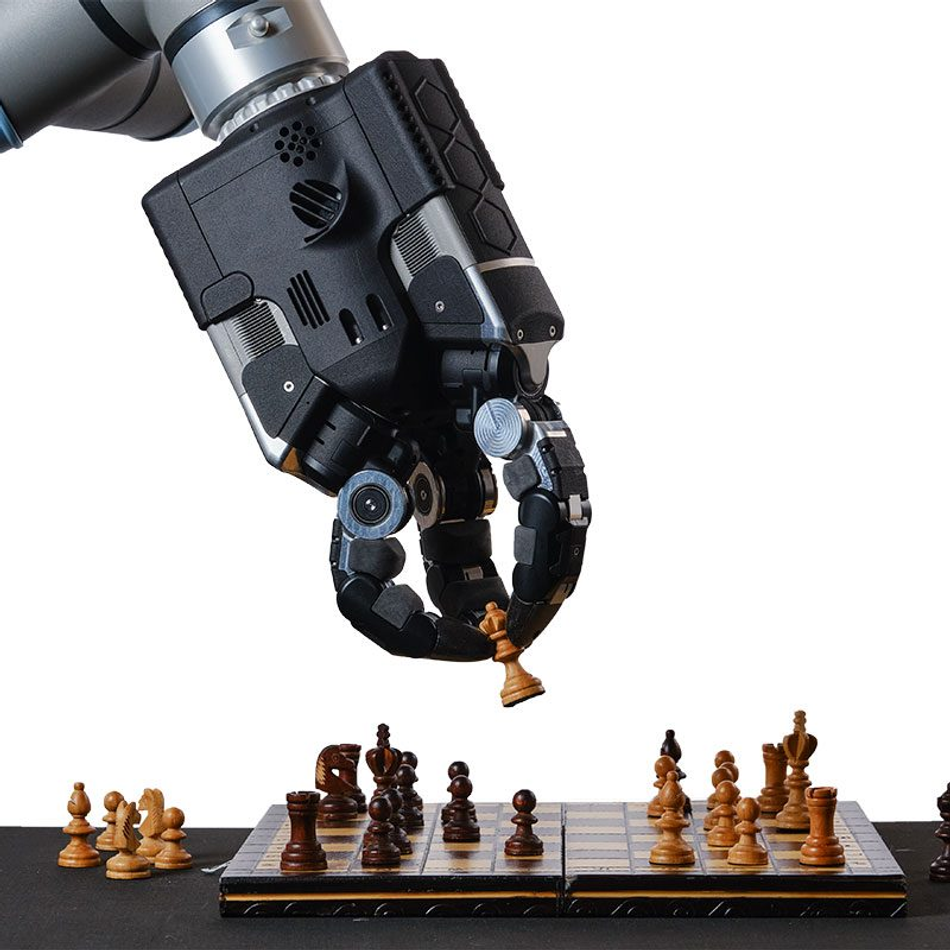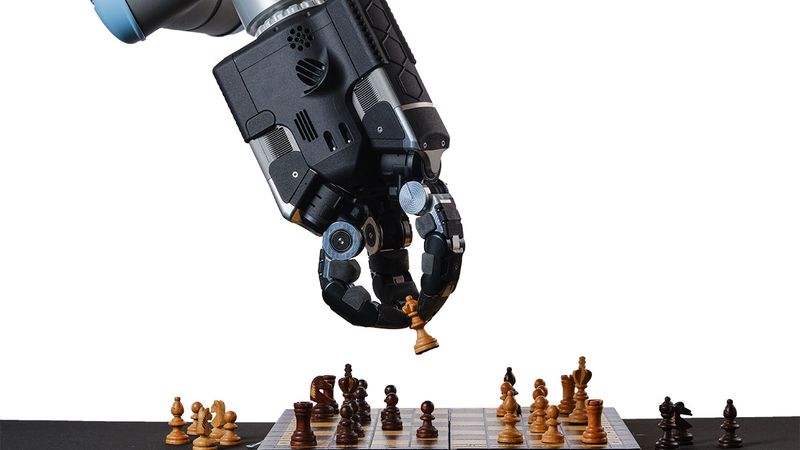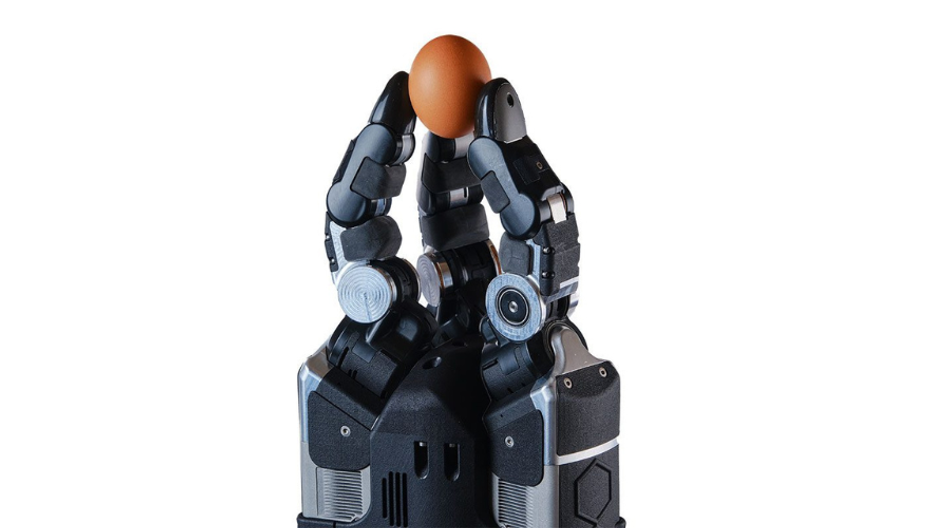Gripping the Future: Shadow Robot's DEX-EE and the Next Generation of Dexterous Manipulation
Discover how Shadow Robot’s DEX-EE gripper is advancing robotic dexterity with AI-driven precision.
In recent years, the field of robotics has seen remarkable advancements in gripper technology that pushes the boundaries of dexterity and manipulation. Shadow Robot is at the forefront of this evolution as a pioneer in innovative robotics development. Shadow’s approach to the innovative solutions has caught the attention of industry leaders, including Google DeepMind, a leading AI research lab focused on developing artificial intelligence capable of performing a wide range of tasks. This collaboration has led to the creation of DEX-EE, a groundbreaking gripper that may revolutionize robotic manipulation and machine learning research.
The Challenge from Google DeepMind
In 2017, Google DeepMind approached Shadow Robot with a big challenge. The DeepMind project was conducting research on generalized intelligence and the role of embodiment in learning—how physical interaction with the world plays a part in learning, especially for tasks that involve understanding and manipulating objects. The study required a robot with high sensitivity and a robust design.
For their research, the DeepMind team needed a design that could reliably run long-term and perform physically demanding experiments without constraints within its workspace. The study required a robot that could strike its environment repeatedly to learn how to manipulate objects. This meant that the robot needed to be resilient, sensor-rich and provide large volumes of high-quality data, while operating for prolonged periods without interruption for repairs and without the need to restart experiments.
The challenge pushed the boundaries of existing robotic capabilities because it required a solution that was both robust and highly precise. Google DeepMind approached Shadow Robot for this challenge. Shadow Robot has partnered with numerous research projects and the company’s flagship Shadow Dexterous Hand has contributed to major advancements in the field of robotics.
Read more about the Shadow Dexterous Hand and its contributions in our three-part Shadow Dexterous Hand series.
DEX-EE: Shadow Robot’s Innovative Solution
In response to the challenge from Google DeepMind, Shadow Robot developed DEX-EE, a groundbreaking dexterous robot hand, as well as a major advancement in the field of machine learning robots. DEX-EE is designed to perform with dynamic and controlled motion in a robust and reliable package. The hand enables long-running experiments without interruptions due to hardware failure.
One of DEX-EE’s most innovative features is its high-speed network sensors, which provide rich data including position, force, and inertial measurement. Each finger has hundreds of channels of tactile sensing, and Shadow’s advanced fingertip sensors have hundreds of taxels (short for tactile pixel—the individual sensing elements that make up a tactile sensor), each with a massive dynamic range. With this wealth of sensory data, researchers can gather huge amounts of data from dexterous robotic tasks.
DEX-EE was developed with an intensive focus on reliability and robustness. Through iterative design and testing over five years, Shadow created a new dexterous hand that could withstand the physical demands of Google DeepMind’s research. As a result of this focused development, the DEX-EE is a functional, reliable, and data-rich research tool. DEX-EE’s capabilities position it as an ideal hardware platform for dexterous robotic research into cognition and manipulation.
DEX-EE Technical Specifications and Advancements
DEX-EE is a significant leap in dexterous robotic hand technology. The robot has high-bandwidth torque and position control loops, which enable delicate and precise fingertip dexterity, while torque and inertial measurement throughout the hand make it sensitive to interactions with its environment.
The hand also features tactile fingertip sensors based on stereo-camera technology, which gives the hand abundant 3D data about the environment in a robust package. Additional, multi-taxel, 3-DOF sensors on the middle and proximal fingers provide crucial information during grasping and manipulation tasks.
Compared to earlier models of the Shadow Hand, DEX-EE offers greater reliability and repairability. It was designed for easy maintenance with minimal training, incorporates fail-safes and a shutdown routing that reduces instances of failure and downtime. The hand’s advanced sensor networks provide rich data, including position, force, and inertial measurement, with hundreds of channels of tactile sensing per finger. Shadow’s innovative fingertip sensors have hundreds of taxels each, with a dynamic range that significantly surpasses the capabilities of other dexterous hands.
DEX-EE is also integrated with ROS (Robot Operating System), making it versatile as a research tool. This combination of robustness, advanced sensing capabilities, and ease of integration positions DEX-EE as an ideal platform for dexterous manipulation research that is capable of withstanding the demands of long-term machine learning experiments.
Applications in Machine Learning and AI Research

DEX-EE represents the next major advancement in dexterous manipulation research because it provides a robust platform for complex machine learning experiments like Google DeepMind. The advanced sensor networks and tactile capabilities of DEX-EE enable researchers to gather enormous amounts of data during experiments and push the boundaries of what’s possible in robotic learning.
Google DeepMind has leveraged DEX-EE’s capabilities in their latest AI system DemoStart, which helps robots learn to perform complex tasks that require dexterous movement. With these systems, Google DeepMind has achieved remarkable results, like inserting a plug into a socket, tightening a bolt, and other tasks that were previously challenging for robots to master.
DEX-EE’s durability allows for long-running experiments without interruptions, making it ideal for reinforcement learning protocols that involve repeated physical interactions with the environment. This has already helped researchers explore new frontiers in embodied AI, investigating how physical interactions contribute to learning and the development of generalized intelligence.
The hand’s integration with ROS further enhances its versatility as a research tool because it allows for easier implementation of new and existing learning algorithms and control strategies. With this combination of robustness, advanced sensing, and flexibility, DEX-EE is positioned to be a transformative platform for exploring the future of dexterous manipulation in AI and robotics.
Shadow Robot's Unique Approach to Robotics Development
Shadow Robot continues to distinguish itself as a robotics company through problem-solving approaches and focus on custom solutions. Rather than offering off-the-shelf products that don’t meet a particular need, Shadow engages deeply with clients to understand their specific issues and develop tailored solutions.
This collaborative approach has been exemplified in the development of DEX-EE, where Shadow worked closely with Google DeepMind over five years. Shadow’s willingness to rethink fundamental design principles demonstrates their commitment to innovation and their ability to work at the cutting edge of technology.
Shadow has positioned themselves as a research and hardware company that is capable of tackling any robotics challenge. They have established a unique niche in the industry, bridging academic research and practical, real-world applications.
Leading Innovation in Custom Robotics Solutions
Shadow Robot stands out as a leader in collaborative robotics and demonstrates a commitment to addressing practical needs through innovative design and partnership. Shadow’s work on DEX-EE, developed alongside Google DeepMind, emphasizes the company’s ability to meet the changing demands of cutting-edge research. Shadow continues to push the boundaries of dexterity and manipulation by fostering collaboration and by focusing on tailored solutions that meet practical needs. In the evolving field of robotics, Shadow’s dedication to understanding and responding to the unique challenges positions the company as an important player in robotics research.
DEX-EE marks a significant milestone for Shadow Robot. While designed for our core research market, it embodies our vision of reaching beyond this to real-world application research. We remain committed to our fundamental research customers, but DEX-EE represents our expanding horizons. It's a step towards a future where our technology not only advances scientific understanding but also addresses practical challenges across industries, allowing us to make a broader impact while continuing to innovate within the research community.
Gavin Cassidy, Head of Product Development at Shadow Robot.
For more information about Shadow’s collaborative problem solving and innovative robotics, check out the Shadow Robot website. The Shadow Robot Dexterous Hand series also provides an in-depth look at Shadow’s commitment to advancing the field of robotics.
References
- Shadow Robot. “Collaborative Working: A Case Study”. June 13, 2024. Accessed from https://www.shadowrobot.com/blog/collaboration-case-study/
- Shadow Robot. “DEX-EE Overview” The most robust dexterous robot hand on the market”. June 6, 2024. Accessed from https://www.shadowrobot.com/blog/shadow-robot-hand-overview/
- Shadow Robot. “Introducing DEX-EE the most robust dexterous robot hand on the market’. Accessed from https://www.shadowrobot.com/dex-ee/
- Shadow Robot. “DEX-EE Overview: The most dexterous robot hand on the market”. https://www.shadowrobot.com/blog/shadow-robot-hand-overview/
- Google DeepMind. “Our latest advances in robot dexterity”. 12 September 2024. Accessed from https://deepmind.google/discover/blog/advances-in-robot-dexterity/


